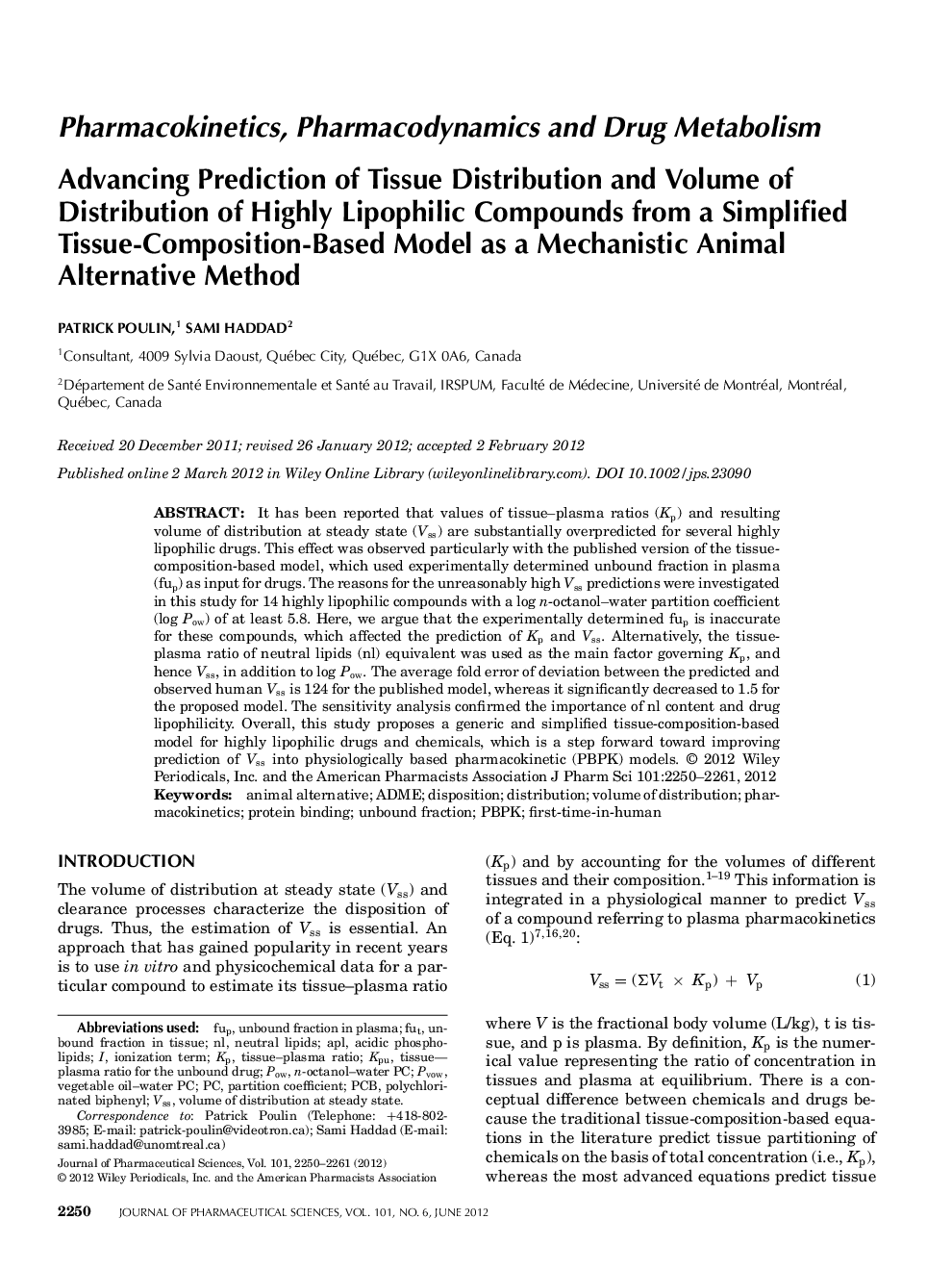| Article ID | Journal | Published Year | Pages | File Type |
|---|---|---|---|---|
| 2485754 | Journal of Pharmaceutical Sciences | 2012 | 12 Pages |
Abstract
It has been reported that values of tissue-plasma ratios (Kp) and resulting volume of distribution at steady state (Vss) are substantially overpredicted for several highly lipophilic drugs. This effect was observed particularly with the published version of the tissue-composition-based model, which used experimentally determined unbound fraction in plasma (fup) as input for drugs. The reasons for the unreasonably high Vss predictions were investigated in this study for 14 highly lipophilic compounds with a log n-octanol-water partition coefficient (log Pow) of at least 5.8. Here, we argue that the experimentally determined fup is inaccurate for these compounds, which affected the prediction of Kp and Vss. Alternatively, the tissue-plasma ratio of neutral lipids (nl) equivalent was used as the main factor governing Kp, and hence Vss, in addition to log Pow. The average fold error of deviation between the predicted and observed human Vss is 124 for the published model, whereas it significantly decreased to 1.5 for the proposed model. The sensitivity analysis confirmed the importance of nl content and drug lipophilicity. Overall, this study proposes a generic and simplified tissue-composition-based model for highly lipophilic drugs and chemicals, which is a step forward toward improving prediction of Vss into physiologically based pharmacokinetic (PBPK) models.
Keywords
Related Topics
Health Sciences
Pharmacology, Toxicology and Pharmaceutical Science
Drug Discovery
Authors
Patrick Poulin, Sami Haddad,
